A Historical Sketch of Babylon
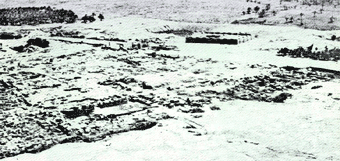 IN
THE pages of history, there lives no city more glamorous than Babylon. Its very
name conjures visions of wealth and splendor. Its treasures of gold and jewels
were fabulous. One naturally pictures such a wealthy city as located in a
suitable setting of tropical luxury, surrounded by rich natural resources of
forests and mines. Such was not the case. It was located beside the Euphrates
River, in a flat, arid valley. It had no forests, no mines—-not even stone for
building. It was not even located upon a natural trade-route. The rainfall was
insufficient to raise crops.
IN
THE pages of history, there lives no city more glamorous than Babylon. Its very
name conjures visions of wealth and splendor. Its treasures of gold and jewels
were fabulous. One naturally pictures such a wealthy city as located in a
suitable setting of tropical luxury, surrounded by rich natural resources of
forests and mines. Such was not the case. It was located beside the Euphrates
River, in a flat, arid valley. It had no forests, no mines—-not even stone for
building. It was not even located upon a natural trade-route. The rainfall was
insufficient to raise crops.
Babylon is an outstanding example of man's ability to achieve great objectives, using whatever means are at his disposal. All of the resources supporting this large city were man-developed. All of its riches were man-made.
Babylon possessed just two natural resources—a fertile soil and water in the river. With one of the greatest engineering accomplishments of this or any other day, Babylonian engineers diverted the waters from the river by means of dams and immense irrigation canals. Far out across that arid valley went these canals to pour the life-giving waters over the fertile soil. This ranks among the first engineering feats known to history. Such abundant crops as were the reward of this irrigation system the world had never seen before.
 Fortunately,
during its long existence, Babylon was ruled by successive lines of kings to
whom conquest and plunder were but incidental. While it engaged in many wars,
most of these were local or defensive against ambitious conquerors from other
countries who coveted the fabulous treasures of Babylon. The outstanding rulers
of Babylon live in history because of their wisdom, enterprise and justice.
Babylon produced no strutting monarchs who sought to conquer the known world
that all nations might pay homage to their egotism.
Fortunately,
during its long existence, Babylon was ruled by successive lines of kings to
whom conquest and plunder were but incidental. While it engaged in many wars,
most of these were local or defensive against ambitious conquerors from other
countries who coveted the fabulous treasures of Babylon. The outstanding rulers
of Babylon live in history because of their wisdom, enterprise and justice.
Babylon produced no strutting monarchs who sought to conquer the known world
that all nations might pay homage to their egotism.
As a city, Babylon exists no more. When those energizing human forces that built and maintained the city for thousands of years were withdrawn, it soon became a deserted ruin. The site of the city is in Asia about six hundred miles east of the Suez Canal, just north of the Persian Gulf. The latitude is about thirty degrees above the Equator, practically the same as that of Yuma, Arizona. It possessed a climate similar to that of this American city, hot and dry.
Today, this valley of the Euphrates, once a populous irrigated fanning district, is again a wind-swept arid waste. Scant grass and desert shrubs strive for existence against the windblown sands. Gone are the fertile fields, the mammoth cities and the long caravans of rich merchandise. Nomadic bands of Arabs, securing a scant living by tending small herds, are the only inhabitants. Such it has been since about the beginning of the Christian era.
 Dotting
this valley are earthen hills. For centuries, they were considered by
travellers to be nothing else. The attention of archaelogists were finally
attracted to them because of broken pieces of pottery and brick washed down by
the occasional rain storms. Expeditions, financed by European and American
museums, were sent here to excavate and see what could be found. Picks and
shovels soon proved these hills to be ancient cities. City graves, they might
well be called.
Dotting
this valley are earthen hills. For centuries, they were considered by
travellers to be nothing else. The attention of archaelogists were finally
attracted to them because of broken pieces of pottery and brick washed down by
the occasional rain storms. Expeditions, financed by European and American
museums, were sent here to excavate and see what could be found. Picks and
shovels soon proved these hills to be ancient cities. City graves, they might
well be called.
Babylon was one of these. Over it for something like twenty centuries, the winds had scattered the desert dust. Built originally of brick, all exposed walls had disintegrated and gone back to earth once more. Such is Babylon, the wealthy city, today. A heap of dirt, so long abandoned that no living person even knew its name until it was discovered by carefully removing the refuse of centuries from the streets and the fallen wreckage of its noble temples and palaces.
Many scientists consider the civilization of Babylon and other cities in this valley to be the oldest of which there is a definite record. Positive dates have been proved reaching back 8000 years. An interesting fact in this connection is the means used to determine these dates. Uncovered in the ruins of Babylon were descriptions of an eclipse of the sun. Modem astronomers readily computed the time when such an eclipse, visible in Babylon, occurred and thus established a known relationship between their calendar and our own.
 In
this way, we have proved that 8000 years ago the Sumerites, who inhabited
Babylonia, were living in walled cities. One can only conjecture for how many
centuries previous such cities had existed. Their inhabitants were not mere
barbarians living within protecting walls. They were an educated and
enlightened people. So far as written history goes, they were the first
engineers, the first astronomers, the first mathematicians, the first
financiers and the first people to have a written language.
In
this way, we have proved that 8000 years ago the Sumerites, who inhabited
Babylonia, were living in walled cities. One can only conjecture for how many
centuries previous such cities had existed. Their inhabitants were not mere
barbarians living within protecting walls. They were an educated and
enlightened people. So far as written history goes, they were the first
engineers, the first astronomers, the first mathematicians, the first
financiers and the first people to have a written language.
Mention has already been made of the irrigation systems which transformed the arid valley into an agricultural paradise. The remains of these canals can still be traced, although they are mostly filled with accumulated sand. Some of them were of such size that, when empty of water, a dozen horses could be ridden abreast along their bottoms. In size they compare favorably with the largest canals in Colorado and Utah.
In addition to irrigating the valley lands, Babylonian engineers completed another project of similar magnitude. By means of an elaborate drainage system they reclaimed an immense area of swamp land at the mouths of the Euphrates and Tigris Rivers and put this also under cultivation.
Herodotus, the Greek traveller and historian, visited Babylon while it was in its prime and has given us the only known description by an outsider. His writings give a graphic description of the city and some of the unusual customs of its people. He mentions the remarkable fertility of the soil and the bountiful harvests of wheat and barley which they produced.
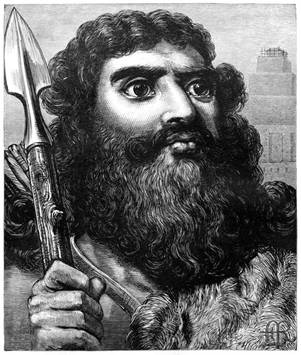
 The
glory of Babylon has faded but its wisdom has been preserved for us. For this
we are indebted to their form of records. In that distant day, the use of paper
had not been invented. Instead, they laboriously engraved their writing upon
tablets of moist clay. When completed, these were baked and became hard tile.
In size, they were about six by eight, and an inch in thickness.
The
glory of Babylon has faded but its wisdom has been preserved for us. For this
we are indebted to their form of records. In that distant day, the use of paper
had not been invented. Instead, they laboriously engraved their writing upon
tablets of moist clay. When completed, these were baked and became hard tile.
In size, they were about six by eight, and an inch in thickness.
These day tablets, as they are commonly called, were used
much as we use modern forms of writing. Upon them were engraved legends,
poetry, history, transcriptions of royal decrees, the laws of the land, titles
to property, promissory notes and even letters which were dispatched by
messengers to distant cities. From these clay tablets we are permitted an
insight into the intimate, personal affairs of the people. For example, one
tablet, evidently from the records of a country storekeeper, relates that upon
the given date a certain named customer brought in a cow and exchanged it for
seven sacks of wheat, three being delivered at the time and the other four to
await the  customer's
pleasure.
customer's
pleasure.
Safely buried in the wrecked cities, archaeologists have recovered entire libraries of these tablets, hundreds of thousands of them.
One of the outstanding wonders of Babylon was the immense walls surrounding the city. The ancients ranked them with the great pyramid of Egypt as belonging to the "seven wonders of the world." Queen Semiramis is credited with having erected the first walls during the early history of the city. Modern excavators have been unable to find any trace of the original walls. Nor is their exact height known. From mention made by early writers, it is estimated they were about fifty to sixty feet high, faced on the outer side with burnt brick and further protected by a deep moat of water.
The later and more famous walls were started about six hundred years before the time of Christ by King Nabopolassar. Upon such a gigantic scale did he plan the rebuilding, he did not live to see the work finished. This was left to his son, Nebuchadnezzar, whose name is familiar in Biblical history.
The height and length of these later walls staggers belief. They are reported upon reliable authority to have been about one hundred and sixty feet high, the equivalent of the height of a modern fifteen story office building. The total length is estimated as between nine and eleven miles. So wide was the top that a six-horse chariot could be driven around them. Of this tremendous structure, little now remains except portions of the foundations and the moat. In addition to the ravages of the elements, the Arabs completed the destruction by quarrying the brick for building purposes elsewhere.
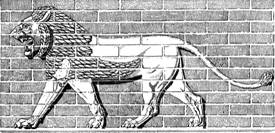 Against
the walls of Babylon marched, in turn, the victorious armies of almost every
conqueror of that age of wars of conquest. A host of kings laid siege to
Babylon, but always in vain. Invading armies of that day were not to be
considered lightly. Historians speak of such units as 10,000 horsemen, 25,000
chariots, 1200 regiments of foot soldiers with 1000 men to the regiment. Often
two to three years of preparation would be required to assemble war materials
and depots of food along the proposed line of march.
Against
the walls of Babylon marched, in turn, the victorious armies of almost every
conqueror of that age of wars of conquest. A host of kings laid siege to
Babylon, but always in vain. Invading armies of that day were not to be
considered lightly. Historians speak of such units as 10,000 horsemen, 25,000
chariots, 1200 regiments of foot soldiers with 1000 men to the regiment. Often
two to three years of preparation would be required to assemble war materials
and depots of food along the proposed line of march.
The city of Babylon was organized much like a modern city. There were streets and shops. Peddlers offered their wares through residential districts. Priests officiated in magnificent temples. Within the city was an inner enclosure for the royal palaces. The walls about this were said to have been higher than those about the city.
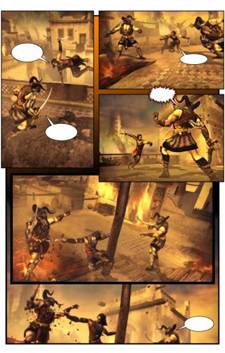 The
Babylonians were skilled in the arts. These included sculpture, painting,
weaving, gold working and the manufacture of metal weapons and agricultural
implements. Their jewelers created most artistic jewelry. Many samples have
been recovered from the graves of its wealthy citizens and are now on
exhibition in the leading museums of the world.
The
Babylonians were skilled in the arts. These included sculpture, painting,
weaving, gold working and the manufacture of metal weapons and agricultural
implements. Their jewelers created most artistic jewelry. Many samples have
been recovered from the graves of its wealthy citizens and are now on
exhibition in the leading museums of the world.
At a very early period when the rest of the world was still hacking at trees with stone-headed axes, or hunting and fighting with flint-pointed spears and arrows, the Babylonians were using axes, spears and arrows with metal heads.
The Babylonians were clever financiers and traders. So far as we know, they were the original inventors of money as a means of exchange, of promissory notes and written titles to property.
Babylon was never entered by hostile armies until about 540 years before the birth of Christ. Even then the walls were not captured. The story of the fall of Babylon is most unusual. Cyrus, one of the great conquerors of that period, intended to attack the city and hoped to take its impregnable walls. Advisors of Nabonidus, the King of Babylon, persuaded him to go forth to meet Cyrus and give him battle without waiting for the city to be besieged. In the succeeding defeat to the Babylonian army, it fled away from the city.
Cyrus, thereupon, entered the open gates and took possession without resistance.
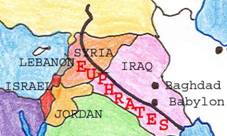 Thereafter
the power and prestige of the city gradually waned until, in the course of a
few hundred years, it was eventually abandoned, deserted, left for the winds
and storms to level once again to that desert earth from which its grandeur had
originally been built. Babylon had fallen, never to rise again, but to it
civilization owes much.
Thereafter
the power and prestige of the city gradually waned until, in the course of a
few hundred years, it was eventually abandoned, deserted, left for the winds
and storms to level once again to that desert earth from which its grandeur had
originally been built. Babylon had fallen, never to rise again, but to it
civilization owes much.
The eons of time have crumbled to dust the proud walls of its temples, but the wisdom of Babylon endures.
GEORGE SAMUEL CLASON
was born in Louisiana, Missouri, on November 7, 1874. He attended the
University of Nebraska and served in the United States Army during the
Spanish-American War. Beginning a long career in publishing, he founded the
Clason Map Company of Denver, Colorado, and published the first road atlas of
the United States and Canada. In 1926, he issued the first of a famous series
of pamphlets on thrift and financial success, using parables set in ancient
Babylon to make each of his points. These were distributed in large quantities
by banks, insurance companies and employers and became familiar to millions,
the most famous being "The Richest Man in Babylon," the parable from
which the present volume takes its title. These "Babylonian parables"
have become a modern inspirational classic.
End